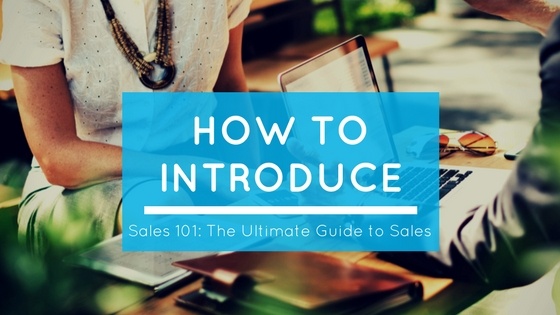Objections are concerns and issues raised by a potential customer during the sales process that inhibit purchase. Some sales reps see objections as a clear ‘no’ to purchase while others start answering them right away and try to strong-arm the prospect. The way a salesperson handles objections shows his skills and experience in the field.
Before we start understanding objection handling it is important to understand that an objection is always good. It is an opportunity to convince the prospect to purchase as well as to qualify him and move him out of the process altogether. No matter how they turn out never let them discourage you. You’ll learn to embrace them soon when you start selling.
Get your ultimate guide to sales with all the 15 lessons today.
How to Handle Objections:

To handle objections you need a simplified process. Your response should not only address the problem but also convince the prospect to move further with purchase. Here are the steps you should take in this regard:
1. Value the objection:
Your prospect has a concern and has given you the opportunity to resolve it. Your objection handling should always begin with gratitude for the same. By defining the roadblock you get the basis for further conversation hence, it is better than a ‘no’. Simply say ‘thank you’ and move further along the objection handling process.
2. Let the prospect explain his concern:
Before you go blasting information about the product wait and let the prospect give you full information about the issue. This will make the prospect feel important. Often the problem isn't the one that the prospect initially brings up. By allowing the person explain his issue in depth you gain a better understanding and can offer more convincing answers. Remember a good conversation means 80% listening and 20% speaking.
3. Delve deeper with questions:
Once the prospect is done explaining the objection insist on having a deeper understanding of the question. For this, you should ask open-ended questions giving the opportunity to people to explain in more detail. An open-ended question is one which requires a subjective answer and cannot be answered with a yes or no. It is much difficult than you would think it is. If you are ever stuck then a simple ‘why’ may be all that you need.
4. Summarize the problem:
Now is the time to summarize all the information into 2-3 sentences and confirm with the prospect if that is his current problem. The above steps would already unveil any problem the prospect was trying to hide. If it is within your capacity to solve the issue then you move to the next step or else treat this as a qualifying process and let the prospect move out of the funnel. For instance, you might not be able to anything if your prospect’s budget is too low to afford the solution.
5. Time to solve the issue:
You should present a solution if the issue can be solved in company’s capacity. If the objection requires you to justify the value of product then consider using customer success stories and data for credibility. Once you give a solution confirm whether or not it was satisfactory for the prospect. If you move past the objection then ask if there are any other issues regarding the purchase or can the prospect move forward with the purchase.
Read More: Marketing Mix Modeling - The Science Behind Predicting Sales from Marketing
Common Objections and How to Handle Them:

-
Price:
It is advisable not to handle pricing objections by discounting price immediately but by justifying value. If you keep lowering price then you will find yourself in a never-ending bargain. If the prospect is comparing your pricing with competitors then you can offer some discount to hold them but always emphasize that it is the value that matters and the price is lowered only for ease of the buyer. If even after discounting your product remains out of the league for the buyer then they simply can't afford it hence thank them and move on.
-
Competition:
It is obvious that the prospect will compare your solution with that of your competitor. Today most of this research is done in the background through websites, social media etc. If your prospect discusses your competitor’s solution with you that means that they are offering you a chance to prove yourself as a better option. Nevertheless, don’t let the conversation center around the competitor and focus on your USPs. In case they are already your competitor’s client then try to understand their pain points and socilit them.
-
Brand:
An ineffective brand is a common issue faced by startups. If the prospect is not sure of your capabilities or hasn’t simply ever heard about you then it is difficult for them to trust you. Customer success stories work very well in such cases. Explain to prospects the problem you solved and the view of the client. If the prospect is, in fact, among your first clients then bank on your work experience and value proposition of the company.
-
Awareness:
Sometimes the prospect doesn't really understand the product or isn’t aware of the problem. They might say something like, “I don’t think we need it right now.” This means that they aren’t aware of the problem. At this point throw in the data and market studies to highlight the impact of the issue. You can also tell the story of a client that showcases how they benefited from the product. If they don’t really have the issue then they aren’t qualified for further sales process so you can move on.
Objection handling is a critical process and it will take you some practice to start implementing these suggestions. Whenever you successfully address a client issue take a note of what you did for future reference. Over time you will start naturally using this process in every communication. Now, it is time for the next step - Conducting high impact meetings.
Our Sales 101 eBook is an all in one guide that offers tips and strategies for different stages of a sales cycle. Get you copy now.

How to Introduce in a Sales Meeting to Get All the Attention
Introducing yourself to prospects is the first step in a sales conversation. It is a one-line sentence that tells the prospect what you do. It is...

How blog content can automate your sales
Content marketing is the way toward making and distributing significant, applicable and reliable content to pull in and secure a distinctly defined...




